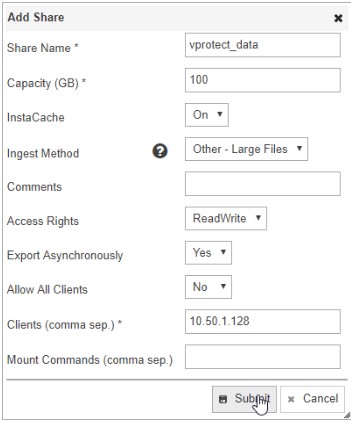Neverfail HybriStor
vPlus supports integration with Neverfail HybriStor. You can use HybriStor volumes like any other file system (mount a single volume over NFS).
Login to the HybriStore dashboard and create NFS share:

In Clients enter your vPlus node IP address and choose No for the allow all clients option:

Now log in to the vPlus node host and mount NFS share:
Now go to the dashboard and create a new File System Backup Destination.
